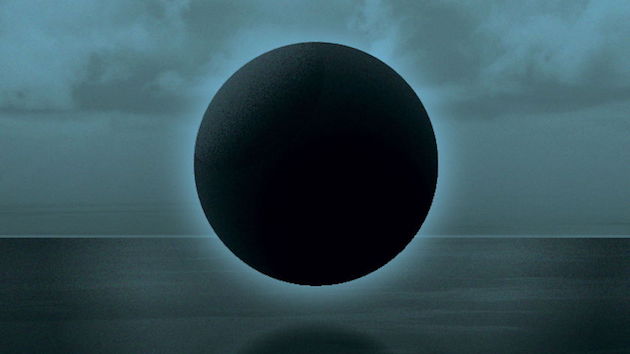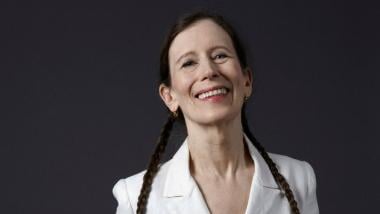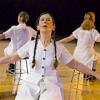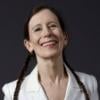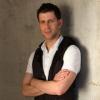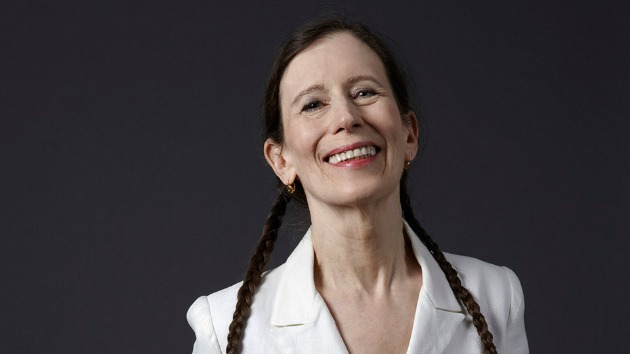
In her nearly six-decade career, Meredith Monk — composer, choreographer, dancer, performance artist, director, filmmaker, and vocal wizard — continues to light up stages around the world. One stage in particular, Walt Disney Concert Hall, will be home to a production of Monk’s 1991 opera, ATLAS, with three performances scheduled for June 11, 12, and 14. Directed by the Los Angeles Philharmonic’s Artist-Collaborator Yuval Sharon, in what the LA Phil calls a “staggeringly ambitious new production,” the three-part opera originally premiered at Houston Grand Opera and was Monk’s first work for an opera company.
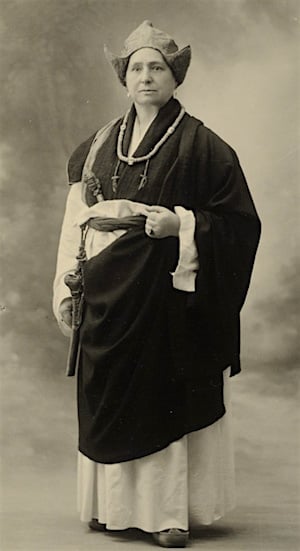
With virtually no text, ATLAS is loosely based on an expedition by the fictional Victorian adventurer Alexandra Daniels (named after the 19th-century French-born traveler Alexandra David-Neel, whose writings fascinated Monk), whose passion for spiritual self-discovery takes her to the ends of the earth and beyond. Essentially an improvisation on vocal sounds or phonemes, the work requires hefty technical prowess, one allowing for the full range of elegant burbles, tremolos, repeating phrases, overtone singing, squeaks, and wails that are Monk trademarks. When it was first mounted, ATLAS received mixed reviews, with the Los Angeles Times noting, “the finished product is an uneven but ultimately charming and emotionally resonant work full of soothingly purling vocalism, hypnotically stylized staging, disarming humor and restorative philosophy.”
According to Sharon, founder and artistic director of the avant-garde opera company, The Industry, and whom The New York Times described as “opera’s disrupter-in-residence,” he is the first director that Monk, 76, has allowed to helm her work. “It’s a big deal to me,” said Sharon, “and it’s a very big deal to Meredith. It’s a huge risk on one hand, but I feel it’s coming at a really important moment. The transference of her ideas is central to who she is and how she works.
Sharon pointed out that many of Monk’s works were created in an aural tradition. “Building an ensemble that gets to know her and the ethos of what she does, it forms this community of artists because it’s about this passing on, so it’s natural she’s thinking of this in her other outputs. It’s an immense honor for me and we’re all kind of learning what this means by allowing the work to be seen on its own merit. It’s taken slightly away from the original creator and allowing it to have this new meaning, and therefore pointing a path towards its future life.”
Sharon, a 2017 MacArthur Fellow who became the first American director at the Bayreuth Festival with his production of Lohengrin in 2018, said the project came about when he and Monk worked together in 2012 at the San Francisco Symphony in a program of excerpts from John Cage’s Song Books. Sharon staged that opus with a decidedly eclectic trio — Joan La Barbara, Jessye Norman, and Monk — all doing the vocal honors.
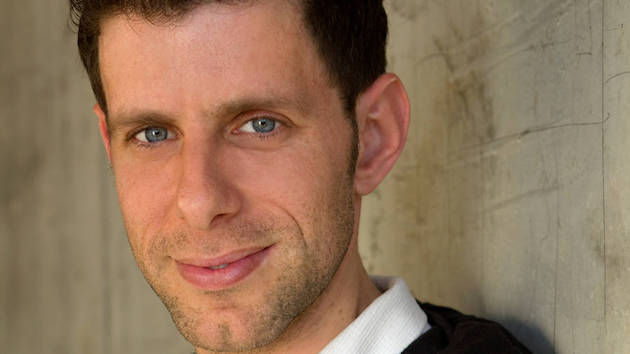
“That’s when we first met,” recalled Sharon, who admits to having had a musical epiphany when he first heard ATLAS in an opera and literature class as a student at UC Berkeley. “Meredith was performing in [the Cage work] and this was a big experiment for her, as she never performs other peoples’ music. It was a wonderful challenge and she told me right away, ‘I never work with directors,’ but we instantly connected and it was a great rapport. Humility,” he added, “prevents me from saying what she saw in me, but she felt supported and trusted by me in that process.
“If she felt that way as a singer,” Sharon continued, “maybe she felt that was the right kind of approach to how her own work could be presented with love and care and attention. Of course, I told her how much that meant to me and we thought if there was an opportunity to [stage ATLAS] without putting the herculean effort squarely on her shoulders — someone who could shepherd it into a new stage of existence — that was a natural way to think. Then at some point during the Cage, she gave me a copy of the video from BAM and said, ‘I’d really like you to direct a version of this.’”
Sharon, who received the 2014 Götz Friedrich Prize in Germany for his production of John Adams’s Doctor Atomic, wears his opera disrupter mantle well: He is, after all, the man who, with The Industry, brought opera into 24 limousines (Hopscotch, 2015), L.A.’s Union Station (the 2013 “headphone” opera, Invisible Cities) and in 2017 staged a radical adaptation of the 1938 radio broadcast War of the Worlds at Disney Hall, with various scenes also taking place simultaneously on several of L.A.’s downtown streets. Last year, as part of the L.A. Phil’s “Fluxus Festival,” Sharon directed John Cage’s Europeras 1 & 2 on Stage 23 at Sony Pictures Studios. As The New York Times’s Joshua Barone wrote, “The juxtapositions were sometimes enlightening, revealing how Hollywood and opera share similar visual language and emotional sweep.” Mounting ATLAS, then, seems in keeping with Sharon’s visionary perspective, with the 1991 work resonating perhaps even deeper today.
“One of the things I’d like to draw out of this production that is connected to our time,” said Sharon, “is that I feel like it’s a piece that does talk about the climate crisis. It’s all about the exploration of the earth by this young woman and her travel companions, and they go to visit landscapes — the arctic, the desert — communities based on agricultural cycles that are completely out of whack. It’s ultimately joyous and optimistic, but it does that through the lens of that sense of urgency that we’re on the brink of losing.
“It’s so central to Meredith’s entire body of work,” added the director, “that humanity is a part of nature and it’s the one aspect of nature that has been at the core of many of her works — in its most epic expression. It’s truly a mythic experience, but it’s so grounded in nature that many of us are deeply concerned about. I’d like to emphasize that without taking away other layers, the supernatural and fantasy elements provide the work with relevance by drawing those connections to an environmental crisis. I might,” Sharon paused, “be putting more of an accent on that than Meredith did in 1991.”
With Sharon a master of the site-specific performance, he plans to use Disney Hall as his palette in evocative ways. “One major way in which we’re transforming the hall with this production is we’re creating a kind of orchestra pit. We’ll remove the first four rows of the seating and put the orchestra there [and] the way that the seats are arranged, it might feel like a pit. That,” elucidated Sharon, “was [architect] Frank Gehry’s original idea — that those seats could be converted into a pit and allow the entire stage to be available.”
Sharon is also curious to see how the opera will sound acoustically, as part of the work’s multilayered aesthetic concerns microphones, with the singers meant to be amplified. “But lightly,” he added, “because it’s not a heavily amplified show and you should feel connected to the singers.”
As for the singers not having a text, the director admitted that is somewhat of a challenge. “Memorization is more difficult, and in rehearsal it takes a different approach to find a line, but those are fairly mundane issues in the end. I’ve been watching the singers bloom, and it feels so real to them. There’s no artifice and they’re not singing in a language that’s not theirs — or trying to grapple with the meanings of words. It goes to the root of why we love music. There are no supertitles and it’s nice to think this experience of the piece will be so direct. If anything, the lack of language has allowed the music to go deeper and deeper faster.”
In 2006 the Los Angeles Master Chorale performed the third act of ATLAS. Entitled, “Invisible Light,” it deals with resonance and sheer energy. At the time, Monk said that the non-verbal text helped illuminate qualities other than melodious ones, that there are ways to sing the music “where other worlds are revealed,” and that “people are passing material — a note is attacked and sustained until the next note comes to you, creating inner harmonies.”
And since the composer aspect of Monk, whose own extraordinary voice has a three-octave range, lives comfortably close to her choreographic skillset, she inherently imposes her material onto living bodies, meaning the singers of ATLAS will also be doing terpsichorean duties. Assisting Sharon on that count is Danielle Agami, a frequent collaborator of Sharon’s who is a former member of Batsheva Dance Company and founder of the Los Angeles-based dance troupe Ate9.
The director spoke of working with both Agami and Monk, the latter also credited as artistic advisor to the production: “We are working with Danielle to adapt the movement vocabulary of Meredith and it’s going to feel very theatrical, to say the least. It’s so physical and it comes from the body, but it doesn’t mean it’s choreography — it means that vocal resonance is moving through the physical body of the singer. Danielle is working with me on that, and what she does with Ate9 — that sense of awakening their imaginative senses throughout their entire bodies with singers — even if they’re not highly trained dancers, they are highly imaginative vocal artists.
He elaborated: “Trying to get them to think how their physical apparatus is part of that is wonderful to see. The singers also get a deeper experience through their own craft [meaning there are] additional resonators for them to play with.”
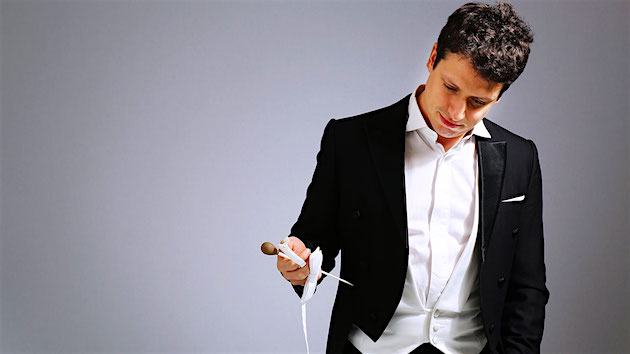
This production of ATLAS features the LA Phil New Music Group performing the opera’s original instrumentation, including a shawm, the forerunner of the oboe, and is conducted by Paolo Bortolameolli. Adding to the spectacle are Lucas Halls’s projections, Emma Kingsbury’s costumes and Es Devlin’s set design, which Sharon described as monumental.
“It came out of my first meeting with Es and talking about the piece and the venue. The first thing she did was draw a big circle and that was the impetus for what we’ve ultimately created — a large sphere sitting on the stage — where one or two people can be framed within this microcosm of our own planet with a 360-degree spherical projection. It feels like a spinning globe.”
Sharon said that the garb for ATLAS also proved challenging, but tapping Kingsbury, who worked on Europeras 1 & 2, was a no-brainer. “The costumes needed to be done in a way that they wouldn’t feel culturally appropriated,” he explained. “That’s another change from the 1991 production. Our politics have shifted and certain things back then that would have been socially progressive would now seem offensive, even with the best intentions. I’ve tried to go for a more fantastical, abstract approach and think of the [costumes] more as embodiments of the landscapes, a paean to the imagination. They are a community — and they’re not — they’re the earth come to life.”
Monk once said that she likened her process to soup making — “I know the ingredients, but I have to boil it down until it becomes what it is” — whereas Sharon said his process is putting all of the elements together.
“The reason I got into opera is that all the different arts are looking for some in-between space where they find some sort of a meeting point, so it feels organic. I’m trying to put them in the right balance where each one supports the others and are not wholly consumed by each other,” he added.
In fact, Sharon, whose three-year residency with the LA Phil culminates with ATLAS (“It’s the icing on the cake — and it is the cake!”), likened his process to that of a tightrope walk: “That’s the obvious metaphor that comes to mind, and it’s one aspect of my process. The other aspect, with ATLAS, is thinking about how much the rehearsal of a work is a kind of life practice and how can the process of making the work also reflect the society that we want to see.
“I think Meredith has done this so beautifully, in all of her work,” Sharon mused, “and when you see her work, her Utopian vision of what society could be, the generosity of the performers — each is strong but doesn’t overwhelm the ensemble — and the process that requires rigor and discipline but is the challenge that opens the individual up to being who they are. All of those things are essential to what it means to perform Meredith’s music. That has been beautiful to watch and to see.
